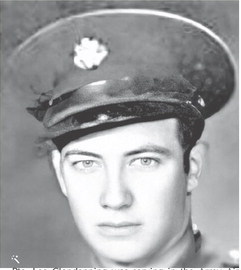Rib Lake WWII veteran finally coming home


After more than 80 years, PFC Lee Clendenning is finally coming home.
After decades of questions and uncertainty, Lee’s family will get closure and peac...


After more than 80 years, PFC Lee Clendenning is finally coming home.
After decades of questions and uncertainty, Lee’s family will get closure and peac...